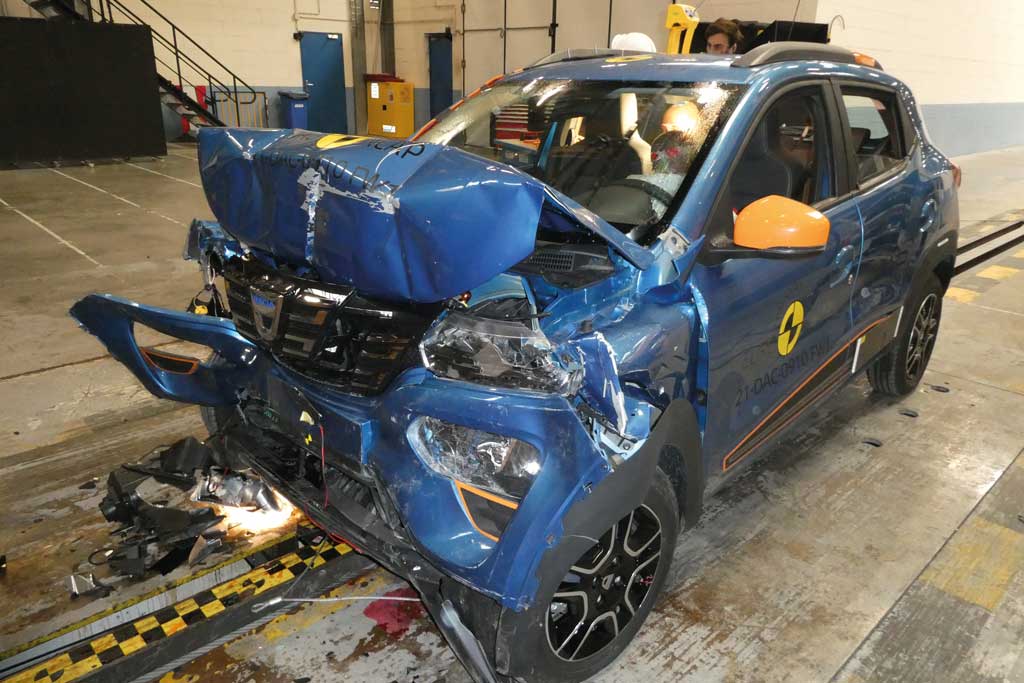
A few thoughts about New Car Assessment Programmes. Euro NCAP is the long-running European car safety testing scheme initiated in 1997, which the UK still recognises, since Brexit. The 2001 Renault Laguna, with four airbags, was the first car given five stars for occupant safety, yet the car would fail to get a single Euro NCAP star today. There are no absolute units for star ratings, which are thus essentially comparative, as the critical safety features are constantly changing with the technology available. Euro NCAP use five star ratings, in the obvious way, relative to what their testing scheme identifies as the best and worst vehicles on the market, and current technology. The resulting updates usually toughen its safety test protocols, and adjust the methods of rating accordingly. But this steady march of safety technology can generate problems when existing models’ ratings are downgraded on retesting, or after review, usually for failing to adopt the latest safety technology.
But we know that some of the safety technology is not universally appreciated and is often switched off by drivers from the moment they start the engine. Some feel that it impedes their driving and is simply annoying. It often resists driver intentions, which may be perfectly reasonable, such as a safe lane change. It may even, at times, provoke problems, or take actions that create on-road incidents. That’s because the safety technology is imperfect, particularly in relation to lane control, and collision avoidance systems, which both earn high rating points. Even more worrying situations can arise though. In recent group tests by another magazine, only the Tesla Model Y out of the ten cars tested using adaptive cruise control set at 42mph, avoided collision with a stationary car. The car in front of the test car intentionally changes lanes to avoid the parked car that is suddenly revealed, and at 30mph all the cars took suitable avoiding or braking action. But at 42mph, all cars, bar the Tesla, crashed into the stationary car. That’s worrying, as an attentive driver would usually have done better than the technology. Technology that resists sudden, maybe illogical, driver actions is one thing, and apparently good sense; but when technology evidently cannot better human observation and resolution of such hazards, the situation needs solving.
However, let’s move on and take a look at the relatively new “Green NCAP,” eco rating system, which is apparently associated with the Euro NCAP safety programme, and not an independent initiative. Like the safety Euro NCAP, it is fully approved and supported by the EU and the UK. Its main purpose is to promote cars which are clean, energy efficient, and minimise environmental damage, to help reduce global warming. The cause is thus undeniably noble, yet here there are potential conflicts with Euro NCAP safety ratings. Green NCAP’s “Best Car of 2022” from their strictly ecological perspective was the Dacia Spring EV city car, that has yet to arrive in Britain. The irony is that the Dacia had previously been given a rock-bottom one star rating by Green NCAP’s associates, the Euro NCAP safety testers! The poor safety rating of the Spring is derived from a number of shortcomings, amongst which are having no knee airbags, side pelvis airbags, or centre airbags, poor pedestrian bonnet protection, and no lane assistance system. Any “green thinking” drivers who are tempted by the five start eco rating should thus be aware of the Spring’s low safety rating. Euro NCAP and Green NCAP need to resolve this conflict, and I’m inclined to feel that some, if not all, of those key safety items absent from the Spring should be legally obligatory these days, and are arguably much more important than dubiously effective lane control technology.
There are also other significant conflicts between safety and ecological merit that simply cannot be ignored. Cars with good safety ratings can also be environmentally good, and the Hyundai Ioniq 5 EV, for example, scores five stars for both its safety and eco features. But many electric cars are a lot heavier than fossil fuel cars, on account of their significant battery weight, and in effect they represent a significant threat to other much lighter vehicles. This is a worrying situation, in this case for the surprisingly lightweight EV, the Dacia Spring, weighing just 970kg. The heavier Fiat 500e (by 250kg) scored five Euro NCAP stars for safety, and I wonder whether we should be asking if the construction and safety kit of the Dacia Spring will be up to scratch safety-wise, if and when it arrives in Britain?
© Motorworld Media 2023
Registered Office: 4 Capricorn Centre, Cranes Farm Road, Basildon, Essex. SS14 3JJ
Company Number: 8818356
Website designed by Steve Dawson